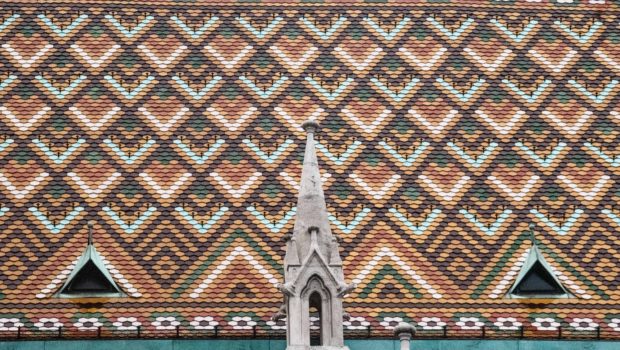10 of the Most Unusual Roofing Structures Around the World
When you think of remarkable structures around the world, one of two structures tend to stand out. It could be the remarkable height or the strangely designed rooftop. A unique rooftop is often an architect’s way of adding their signature to their work.
With all these weird and wonderful roofing structures going up around the world, my mind always automatically goes to the question, “How do you get a ladder up there?” Fortunately, modern inventions have made it possible for height safety companies to provide an assortment of roof ladder systems. This means there will be a roof ladder system no matter how strange the roof looks!
Strange Roofing Structures Around the World
The world is adorned with remarkable landmark buildings that are topped off with equally unique and beautiful rooftops. These roofs are a testament to the architect’s style and skill. Let’s have a look at a few of the most famous roof structures that have stood the test of time.
Empire State Building—New York
When the Empire State Building was finished in 1931 it had 102 floors and was considered to be one of the tallest buildings in the world. The roof has a spire that extends up into the New York sky and adds an unusual ambiance to the New York skyline. The roof height is 1,250 feet, making the complete building a height of 1,454 feet, which in 1931 was quite remarkable.
Sydney Opera House—Australia
Completed in 1973, the Sydney Opera House has a very unique rooftop. The roof is made up of 2,194 pre-cast concrete sections commonly referred to as “shells”. In addition to that, there are 1,056,006 tiles on the roof which add to the distinguished look of the building. This rooftop has been voted as one of the greatest marvels of the 20th century.
Taj Mahal—India
Known as one of the most remarkable structures ever created, the Taj Mahal was built in 1653 as a mausoleum. The centre octagonal chamber has a domed roof with a lotus design painted and moulded into it. Four smaller, but similar domes surround the main design. The intricate design is remarkable because it was designed and structured in the 17th century without the tools and technologies we have today!
St. Basil’s Cathedral—Russia
This colourful marvel was built in 1561 and its multi-coloured spires are recognised across the world. The onion-shaped domes are a symbol of the battles Ivan the Terrible won against Kazan. According to history, each of the eight onion-shaped domes represents an attack on Kazan in 1552. Originally the domes were painted white but were replaced with present-day multi-coloured domes in the 1670s during a structural revamp.
Olympia Park—Germany
The summer of 1972 saw the construction of the Olympia Park to facilitate the Summer Olympics. Noted as the key structure of the whole park, this popular building’s roof was an architectural sensation. The roof was designed to be transparent as a way to symbolise openness. The Plexiglas dome made it possible for the games to continue even during times of wind and snow.
Wimbledon Centre Court—England
Wimbledon is well known for hosting the ever-popular tennis championships every year. Established in 1877, the stadium has stood the test of time. A retractable roof was fitted onto the building in 2009 which makes it possible for games to carry on through rainy days. Made with 80,000-square-foot fabric covering and 112-on steel trusses, the retractable roof is a marvel in the sporting world.
St. Peter’s Basilica—Vatican City
This impressive building was constructed in 1626 in the old Renaissance and Baroque styles. Famous painter Michelangelo painted the inside of the roof and the building holds a unique position in the Christian world. The outside of the roof has a central dome which makes it recognisable around the world.
Wat Rong Khun—Thailand
This structure is more commonly known to Westerners as the White Temple. Situated in Thailand, this building is a privately owned art exhibit styled to replicate a Buddhist temple. It was finalized in 1997 and is now open to visitors. The three-tiered roof depicts various images from Thai culture and shows an abundant amount of Naga serpents.
Casa Balto Gaudi—Barcelona
Situated in the centre of Barcelona, this strange building’s roof looks like the back of a dragon. Made in the image of dragon scales, the upper part is designed with large spherical components. Colours change from one end to the other, adding to its mysticism. A large cross with four different arms facing north, south, east and west rise from the main tower.
House of Five Senses—Netherlands
Situated in the Netherlands, the House of Five Senses is situated at the entrance of a famous amusement park and has a roof with five-pointed parts. Each of these represents the five senses. Designed to function as a circus, each pointed section is adorned with many lights that highlight the shape and show this exquisite building off to evening circus goers.
In Conclusion
A roof creates a serious testimonial for the building it covers. Some architects use it as a statement to highlight their otherwise ordinary buildings. Your own house roof might not be as exotic as some of the roofs discussed in this blog, but it will still provide you with all the shelter you need. On the plus side, it might be a lot easier to find a roof ladder for your roof!
Photo by elCarito on Unsplash
















